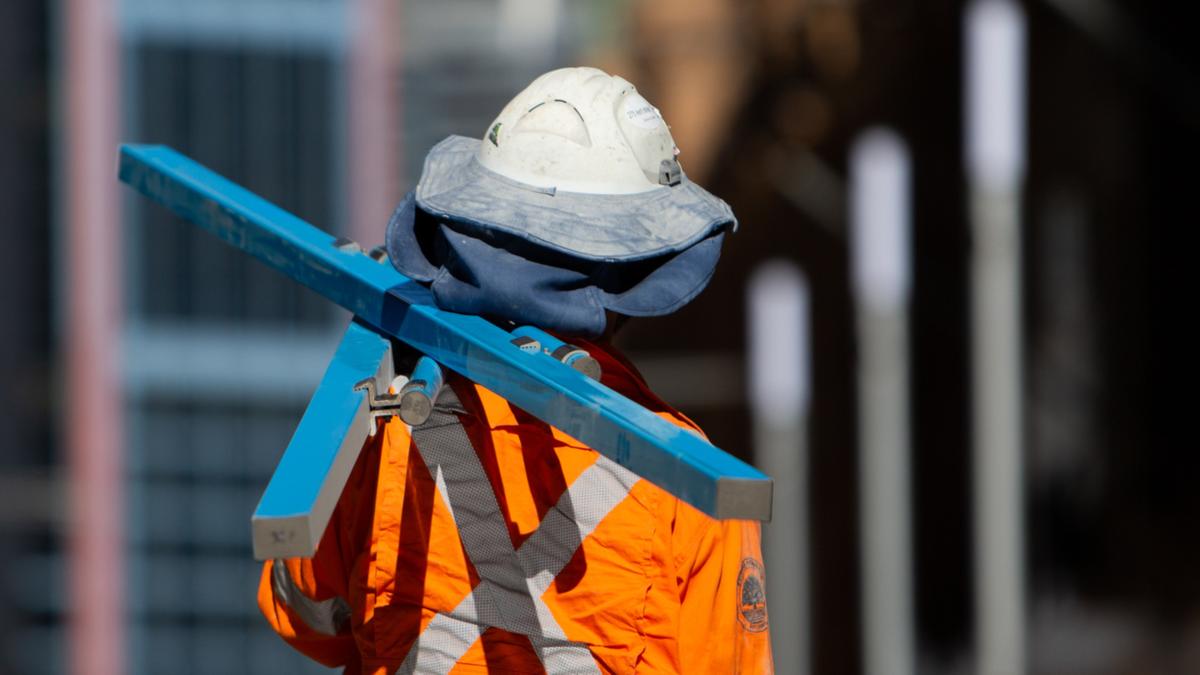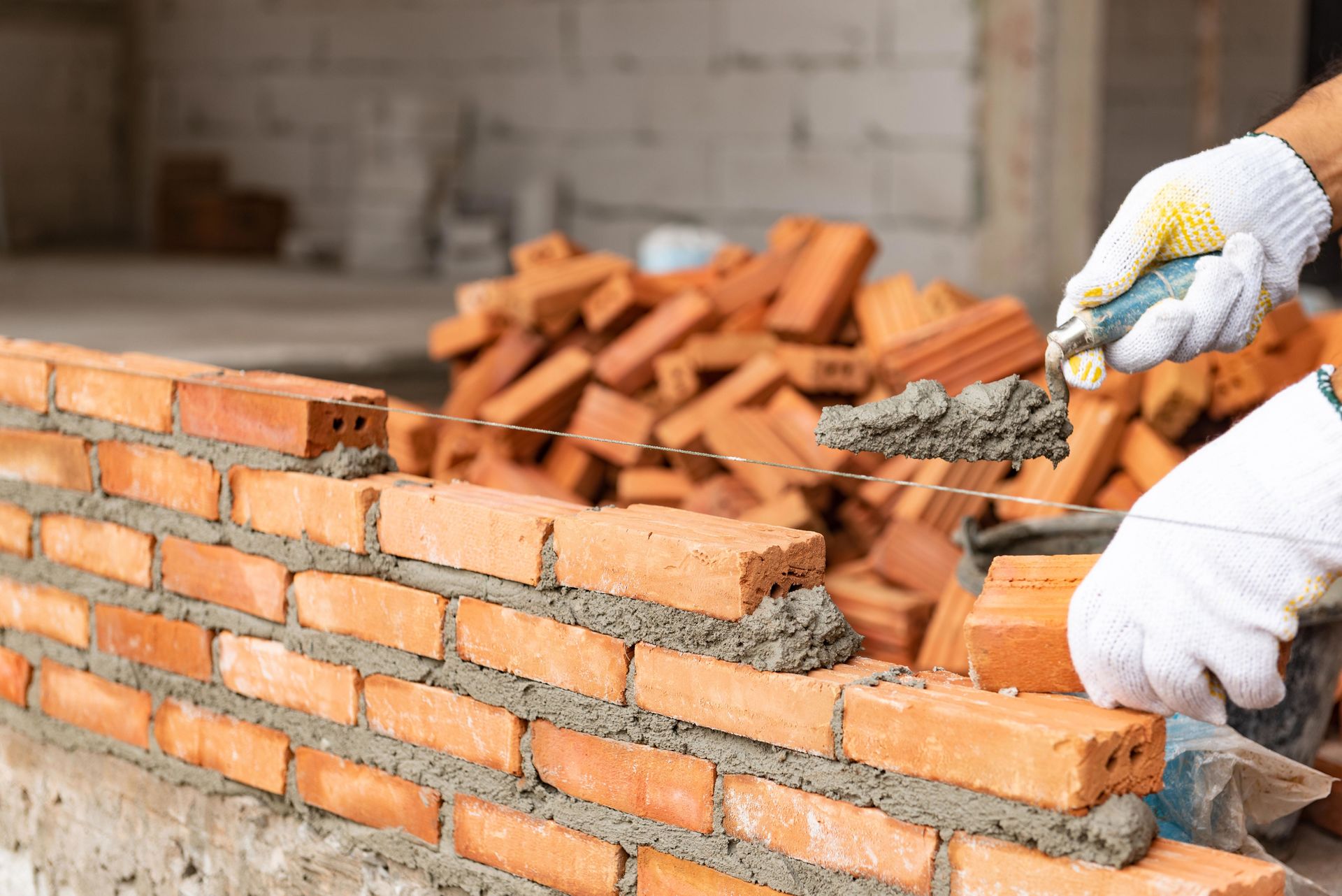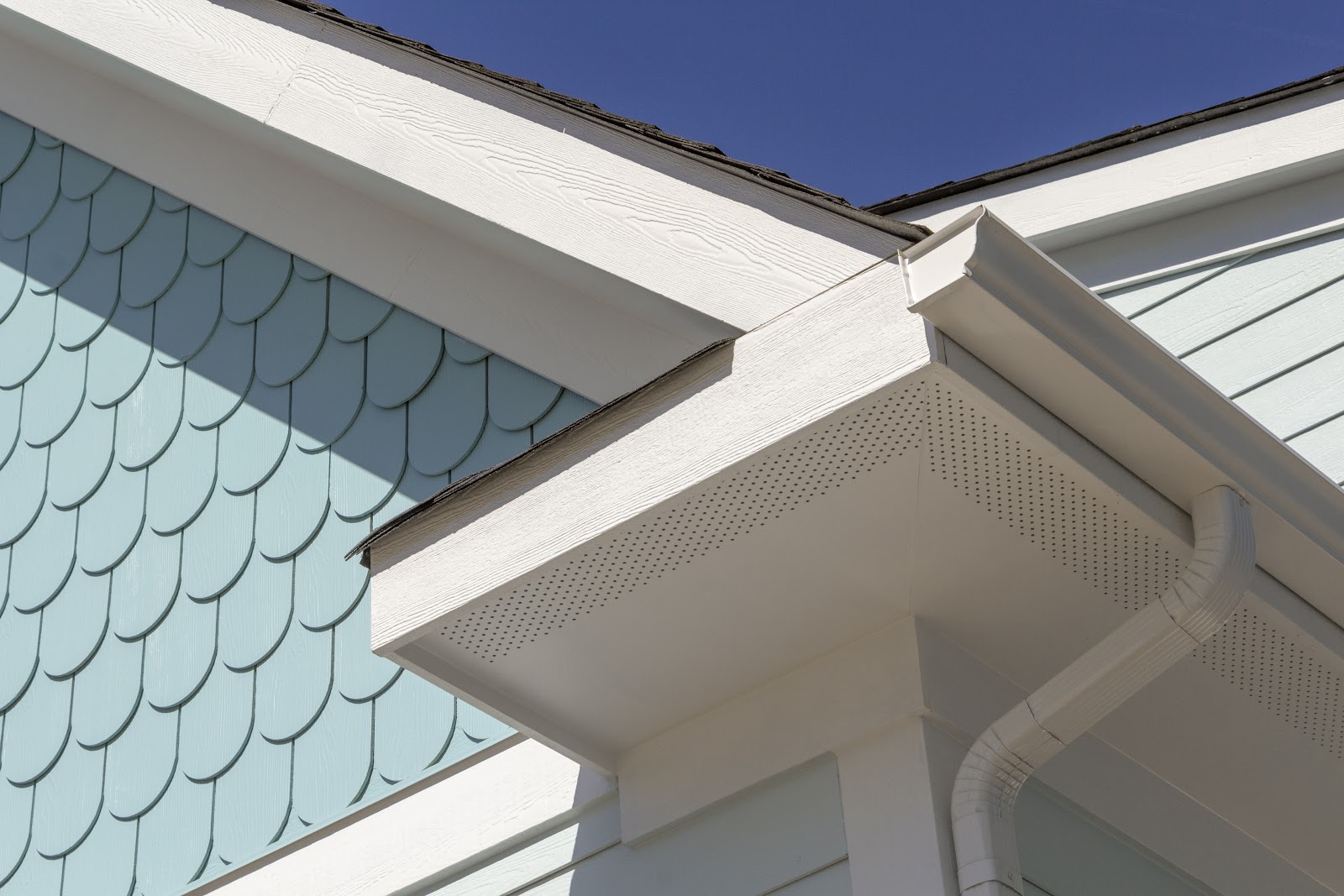Home>diy>Building & Construction>What Does “FRP” Mean In Construction


Building & Construction
What Does “FRP” Mean In Construction
Modified: December 7, 2023
Learn what "FRP" stands for in the context of building construction and how it is used to enhance structural strength and durability.
(Many of the links in this article redirect to a specific reviewed product. Your purchase of these products through affiliate links helps to generate commission for Storables.com, at no extra cost. Learn more)
Introduction
Construction is an ever-evolving industry that constantly seeks innovative materials and techniques to improve structural integrity, durability, and sustainability. One such material that has gained significant attention in recent years is Fiber-Reinforced Polymer, commonly known as FRP. FRP is a composite material that combines high-strength fibers, such as glass or carbon, with a polymer matrix, typically epoxy resin, to create a lightweight but strong and durable material.
FRP has revolutionized the construction industry by offering a range of benefits over traditional construction materials like concrete and steel. It is known for its exceptional strength-to-weight ratio, corrosion resistance, and versatility. This article will delve into the world of FRP in construction, exploring its definition, benefits, applications, challenges, and future trends.
Key Takeaways:
- FRP, or Fiber-Reinforced Polymer, is a game-changer in construction, offering high strength, corrosion resistance, and design flexibility. Its future trends include smart materials, 3D printing, and sustainability integration, shaping the industry’s evolution.
- Despite challenges like cost and fire resistance, FRP’s potential in construction is vast. Innovations in materials, hybrid systems, and standardization are driving its growth, making it a sustainable and versatile choice for infrastructure projects.
Definition of FRP in Construction
Fiber-Reinforced Polymer, or FRP, refers to a composite material that consists of high-strength fibers embedded in a polymer matrix. The fibers, which can be made of materials such as glass, carbon, or aramid, provide the material with enhanced strength and stiffness, while the polymer matrix, commonly epoxy resin, acts as a binder that holds the fibers together.
The combination of the fibers and the polymer matrix in FRP creates a lightweight yet durable material with exceptional mechanical properties. The fibers effectively distribute and transfer the applied load, while the polymer matrix prevents the fibers from buckling or breaking under stress.
In construction, FRP is typically used in the form of bars, sheets, or panels. These components can be fabricated to specific shapes and sizes, making them suitable for a wide range of applications. FRP has gained popularity as an alternative construction material due to its excellent performance in challenging environments and its ability to address common issues associated with traditional materials like steel and concrete.
FRP is considered a sustainable material as it has a low environmental impact during its production and also offers the potential for recycling. Its lightweight nature reduces transportation costs, energy consumption, and carbon emissions. Additionally, FRP’s corrosion resistance eliminates the need for costly and time-consuming maintenance and repair, making it an attractive option for long-lasting infrastructure.
Benefits of FRP in Construction
FRP offers a myriad of benefits in construction, making it an increasingly preferred choice for various applications. Here are some key advantages of using FRP:
- High strength-to-weight ratio: FRP is known for its exceptional strength-to-weight ratio, meaning it can support heavy loads while being lightweight itself. This advantage allows for easier transportation and installation, reducing costs and construction time.
- Corrosion resistance: Unlike traditional materials like steel, FRP is highly resistant to corrosion, making it ideal for applications in harsh environments, such as coastal areas or chemical processing facilities. This attribute extends the lifespan of FRP structures and eliminates the need for regular maintenance and repair.
- Design flexibility: FRP can be easily molded and shaped to meet specific design requirements. It offers architects and engineers the freedom to create complex and intricate structures, enhancing the aesthetic appeal of a project.
- Chemical resistance: FRP exhibits excellent resistance to a wide range of chemicals, including acids, alkalis, and solvents. This makes it suitable for use in chemical storage tanks, wastewater treatment plants, and other industrial facilities where exposure to corrosive substances is common.
- Electrical and thermal insulation: FRP has high electrical and thermal insulation properties, offering additional safety benefits in applications such as electrical enclosures, cable trays, and insulation panels. It helps prevent electrical shocks and reduces the risk of fire hazards.
- Durability: FRP is highly durable and has a long service life, even in demanding environments. It is resistant to UV radiation, impact, and wear, ensuring the integrity and longevity of structures built with FRP components.
- Environmental sustainability: FRP has a lower environmental impact compared to traditional materials. Its lightweight nature reduces transportation-related carbon emissions, and it can be recycled at the end of its life cycle, minimizing waste.
These benefits make FRP an attractive choice for a wide range of construction projects, from bridges and tunnels to buildings and infrastructure. As advancements in FRP technology continue, it is expected to play an even more significant role in the construction industry in the coming years.
Common Applications of FRP in Construction
The versatility and durability of FRP make it suitable for a wide range of applications in the construction industry. Here are some common uses of FRP:
- Bridge decks and girders: FRP composites have gained popularity in the construction of bridge decks and girders due to their lightweight nature and corrosion resistance. They offer a longer service life compared to traditional materials, reducing maintenance costs and traffic disruptions.
- Reinforcing bars: FRP reinforcing bars are used as an alternative to steel reinforcement in concrete structures. They offer similar strength properties but have the advantage of being corrosion-resistant, increasing the durability and lifespan of structures such as beams, columns, and slabs.
- Facades and cladding: FRP panels are used for exterior facades and cladding in commercial and residential buildings. They provide a lightweight and customizable solution that offers resistance to weathering, UV radiation, and impact, enhancing the aesthetics and durability of the building envelope.
- Piping systems: FRP pipes and fittings are widely used in industries such as oil and gas, chemical processing, and water treatment. They offer excellent corrosion resistance and can withstand high-pressure and temperature conditions, making them ideal for transporting various liquids and gases.
- Tanks and vessels: FRP tanks and vessels are preferred over traditional materials for storing corrosive substances, such as chemicals, acids, and wastewater. They are lightweight, easy to install, and have a longer lifespan, reducing maintenance costs and minimizing the risk of leaks or failures.
- Roofing and waterproofing: FRP roofing panels are increasingly used as a lightweight and durable solution for roofs in commercial and industrial buildings. They offer excellent resistance to weathering, UV radiation, and water penetration, ensuring long-term protection and energy efficiency.
- Staircases and walkways: FRP is used to construct lightweight and anti-slip staircases, walkways, and platforms in various settings, including industrial plants, stadiums, and public spaces. Its durability, low maintenance requirements, and customization options make it an ideal choice for high-traffic areas.
These are just a few examples of the many applications of FRP in construction. Its versatility and ability to provide innovative solutions to architectural and engineering challenges make it a sought-after material in the industry.
FRP in construction stands for Fiber Reinforced Polymer, a composite material made of a polymer matrix reinforced with fibers. It is known for its high strength, lightweight, and corrosion resistance, making it a popular choice for structural strengthening and repair.
Challenges and Limitations of FRP in Construction
While FRP offers numerous advantages in construction, it also comes with certain challenges and limitations that need to be considered. Here are some of the key challenges associated with FRP:
- Cost: FRP materials, especially those with high-strength fibers like carbon, can be more expensive compared to traditional construction materials. The initial cost of FRP components and their fabrication may be higher, although long-term savings can be achieved through reduced maintenance and extended service life.
- Fire resistance: FRP materials are generally not naturally fire-resistant. They have a lower fire resistance compared to materials like steel or concrete. Therefore, additional fire protection measures, such as coatings or fire retardant additives, may be required to meet fire safety regulations in certain applications.
- Structural design considerations: The unique properties of FRP, including its anisotropy and nonlinear behavior, require careful consideration during structural design. Specialized knowledge and expertise in FRP design are necessary to ensure that the material is used optimally and that the structure meets safety and performance requirements.
- UV degradation: While FRP composites are generally resistant to UV radiation, prolonged exposure to sunlight can cause degradation of the polymer matrix, leading to changes in mechanical properties and appearance. Proper UV protection measures, such as coatings or pigments, need to be implemented to minimize potential degradation.
- Material availability: Compared to traditional construction materials, the availability of FRP materials and components may be more limited. Finding reliable suppliers and manufacturers who specialize in FRP can sometimes be a challenge, especially in certain regions or for specific applications.
- Compatibility with other materials: FRP may not be compatible with certain materials commonly used in construction, such as certain adhesives or coatings. Compatibility testing and proper selection of compatible materials are necessary to ensure effective bonding and long-term performance.
Despite these challenges, ongoing research and development efforts are addressing many of these limitations. Innovations in fire-resistant FRP materials, improved design guidelines, and increased availability of FRP products are steadily overcoming these challenges and expanding the applications of FRP in construction.
Read more: What Does ISO Mean In Construction
Future Trends and Innovations in FRP Construction
The field of FRP construction is continuously evolving, and several promising trends and innovations are shaping its future. Here are some key areas to watch for:
- Advancements in materials: Researchers are working on developing new fibers, resins, and additives to enhance the properties of FRP materials. This includes exploring carbon nanotubes, graphene, and bio-based resins, which could offer even greater strength, durability, and sustainability.
- 3D printing of FRP structures: With the advancement of 3D printing technology, there is a growing interest in applying it to FRP construction. 3D printing allows for complex and geometrically optimized structures to be fabricated with ease, opening up new possibilities for architectural design and customization.
- Smart FRP materials: The integration of sensors, actuators, and monitoring systems into FRP structures can enable real-time structural health monitoring. Smart FRP materials have the potential to detect and report structural damage, making maintenance and repair more efficient and cost-effective.
- Hybrid systems: The combination of FRP with other materials, such as concrete or steel, is an emerging trend in construction. Hybrid systems leverage the benefits of different materials to achieve optimal performance and cost-effectiveness for various applications.
- Integration of sustainability: As the construction industry emphasizes sustainability, FRP provides an eco-friendly solution. Future trends will focus on further reducing the carbon footprint of FRP production, enhancing recycling methods, and exploring the use of renewable and recycled materials in FRP composites.
- Standardization and codes: As the usage of FRP in construction increases, there is a growing need for standardized design guidelines and building codes. The development of internationally recognized standards will help ensure consistency, safety, and widespread adoption of FRP in various construction projects.
- Education and training: With the increasing adoption of FRP, there is a need for a well-trained workforce with expertise in FRP design, manufacturing, and installation. Educational institutions, industry associations, and certification programs play a crucial role in providing the necessary knowledge and skills for professionals in the FRP construction industry.
These trends and innovations are driving the future of FRP construction, pushing the boundaries of what is possible in terms of structural design, performance, and sustainability. As technology advances and knowledge expands, FRP is expected to become even more versatile, widely used, and cost-effective in the construction industry.
Conclusion
Fiber-Reinforced Polymer (FRP) has emerged as a game-changing material in the construction industry, offering a host of benefits over traditional materials like concrete and steel. Its high strength-to-weight ratio, corrosion resistance, design flexibility, and durability make it an attractive choice for a wide range of applications.
From bridge decks and reinforcing bars to facades and piping systems, FRP has found its place in various construction projects. Its lightweight nature, excellent mechanical properties, and resistance to chemicals and corrosion have made it a reliable and efficient solution for critical infrastructure needs.
Though challenges like cost, fire resistance, and structural design considerations exist, ongoing advancements are addressing these limitations. The future of FRP construction holds great promise, with innovations in materials, 3D printing, smart technology, hybrid systems, and sustainability driving its evolution.
As the construction industry continues to prioritize sustainability, FRP’s eco-friendly attributes and potential for recycling add to its appeal. Standardization, education, and training are also key aspects of ensuring the proper and widespread use of FRP in construction projects.
In conclusion, FRP has revolutionized the construction industry by offering a versatile, lightweight, and durable alternative to conventional materials. With ongoing research and development, FRP’s role in construction will undoubtedly continue to grow, shaping the future of infrastructure with its strength, resilience, and sustainability.
Frequently Asked Questions about What Does "FRP" Mean In Construction
Was this page helpful?
At Storables.com, we guarantee accurate and reliable information. Our content, validated by Expert Board Contributors, is crafted following stringent Editorial Policies. We're committed to providing you with well-researched, expert-backed insights for all your informational needs.















0 thoughts on “What Does “FRP” Mean In Construction”